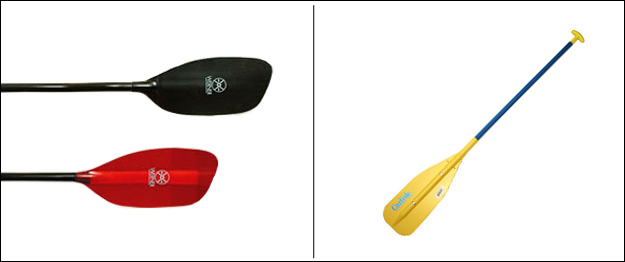
Paddles
For kayaking courses bring your own kayak paddle with you. For rafting and rescue courses paddles rafting paddles are supplied.
In a kayak your paddle is your connection to the water. With it you can pass through rapids, play in holes and surf waves. Having a light but strong paddle that is sized correctly for you is super important. It doesn't have to be super expensive but it should look like a paddle and not a snow shovel.
If you follow our recommendations for kayaking then you should never loose it on the river and although paddles do break it doesn't happen often. We personally use Werner paddles as they perform better than anything else and brake less. A shorter paddle length is better for your shoulders and a bent shaft is better for your wrists. Most people paddle nowadays with a blade feather of about 45° which also helps to save your wrists.
Spare paddles that fit in your boat tend to be 4 part splits so that they can also fit in your playboat. They should be strong enough that you would want to use them to finish a river trip if your main paddle broke! We only take spare paddles on wilderness / gorge trips where the loss of a paddle would mean a serious walk or climb out. Also teaching, where students let go of the paddle more often, and steep creeking where paddles get broken more often deserve a set of splits.
Raft paddles on the other hand do look more like snow shovels! As you tend to hit lots of rocks with them we don't see the sense in paying lots of money for a great paddle unless you are in an international raft racing team or full time raft guide. Special guide paddles which are longer and bigger than standard mean that you don't paddle and end up just steering. OK if that's what you're into, but most experienced guides would rather have the flexibility to paddle and/or steer.